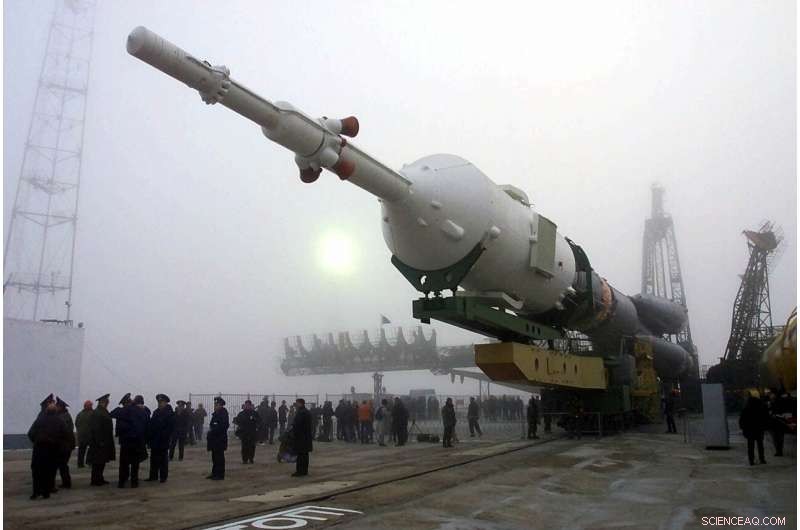
Neste 29 de outubro, 2000, foto do arquivo, o impulsionador Soyuz é transportado para a plataforma de lançamento no Cosmódromo de Baikonur, no Cazaquistão. Dois dias depois, O astronauta americano Bill Shepherd, e os cosmonautas russos Sergei Krikalyov e Yuri Gidzenko decolaram para se tornar os primeiros residentes na Estação Espacial Internacional. (AP Photo / Mikhail Metzel, Arquivo)
A Estação Espacial Internacional era apertada, úmido, três quartos insignificantes quando a primeira equipe se mudou. Vinte anos e 241 visitantes depois, o complexo tem uma torre de vigia, três banheiros, seis compartimentos de dormir e 12 quartos, dependendo de como você conta.
Segunda-feira marca duas décadas de um fluxo constante de pessoas que vivem lá.
Astronautas de 19 países flutuaram pelas escotilhas da estação espacial, incluindo muitos visitantes recorrentes que chegaram em ônibus para trabalhos de construção de curto prazo, e vários turistas que pagam pela sua passagem.
A primeira tripulação - o americano Bill Shepherd e os russos Sergei Krikalev e Yuri Gidzenko - decolou do Cazaquistão em 31 de outubro, 2000. Dois dias depois, eles abriram as portas da estação espacial, juntando suas mãos em unidade.
Pastor, um ex-SEAL da Marinha que serviu como comandante da estação, comparou-o a viver em um navio no mar. Os três passaram a maior parte do tempo persuadindo o equipamento a funcionar; sistemas obstinados deixavam o lugar muito quente. As condições eram primitivas, em comparação com agora.
As instalações e reparos levaram horas na nova estação espacial, versus minutos no solo, Krikalev lembrou.
"Cada dia parecia ter seu próprio conjunto de desafios, "Shepherd disse durante um recente painel de discussão da NASA com seus companheiros de tripulação.
A estação espacial desde então se transformou em um complexo que é quase tão longo quanto um campo de futebol, com oito milhas (13 quilômetros) de fiação elétrica, um acre de painéis solares e três laboratórios de alta tecnologia.
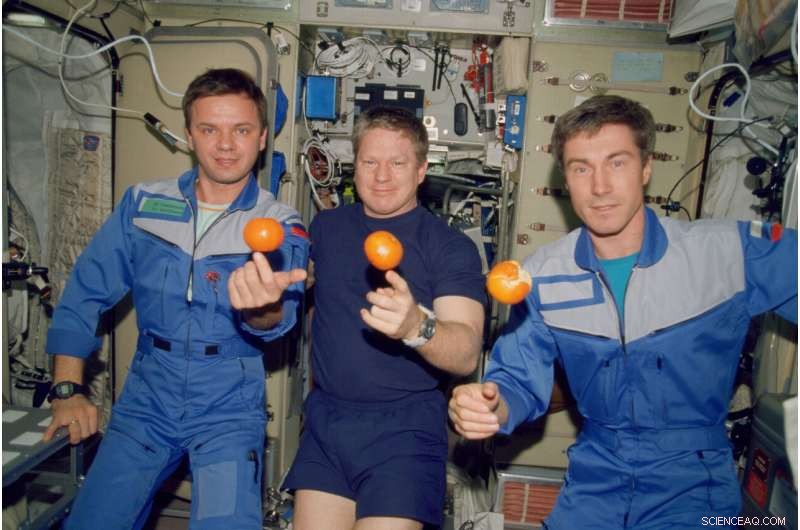
Nesta foto fornecida pela NASA, os membros da tripulação da Expedição 1 posam com laranjas frescas a bordo do Módulo de Serviço Zvezda da Estação Espacial Internacional em órbita terrestre em 4 de dezembro, 2000. Retratado, Da esquerda, são o cosmonauta Yuri P. Gidzenko, Comandante da Soyuz; o astronauta Bill Shepherd, comandante da missão; e o cosmonauta Sergei K. Krikalev, engenheiro de voo. (NASA via AP)
"São 500 toneladas de coisas voando no espaço, a maioria dos quais nunca se tocou até chegar lá e disparar, "Shepherd disse à Associated Press." E tudo funcionou por 20 anos quase sem grandes problemas. "
"É uma verdadeira prova do que pode ser feito nesses tipos de programas, " ele disse.
Pastor, 71, aposentou-se há muito tempo da NASA e mora em Virginia Beach, Virgínia. Krikalev, 62, e Gidzenko, 58, subiram nas fileiras do espaço russo. Ambos estiveram envolvidos no lançamento da 64ª tripulação em meados de outubro.
A primeira coisa que os três fizeram uma vez ao chegar à estação espacial escura em 2 de novembro, 2000, foi acender as luzes, que Krikalev lembrou como "muito memorável". Em seguida, eles aqueceram água para bebidas quentes e ativaram o único banheiro.
"Agora podemos viver, "Gidzenko lembra que Shepherd disse." Temos luzes, temos água quente e banheiro. "
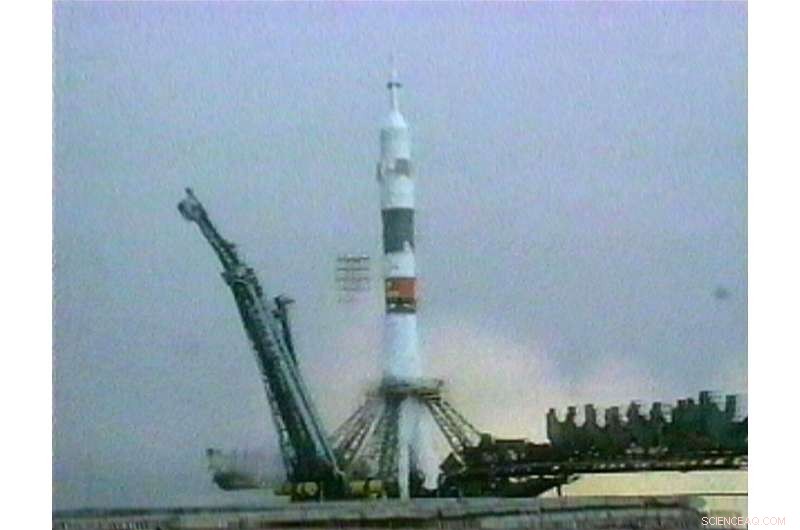
Neste 31 de outubro, 2000, imagem de arquivo de vídeo fornecido pela NASA, uma nuvem de fumaça envolve o foguete Soyuz segundos antes da decolagem do Cosmódromo de Baikonur, no Cazaquistão, transportando os primeiros residentes da Estação Espacial Internacional. Dois dias depois, O astronauta americano Bill Shepherd, e os cosmonautas russos Sergei Krikalev, e Yuri Gidzenko chegou à estação espacial. (NASA via AP, Arquivo)
A tripulação chamou sua nova casa de Alpha, mas o nome não pegou.
Apesar de ser pioneiro no caminho, os três não tiveram problemas durante seus quase cinco meses lá, Shepherd disse, e até agora a estação tem se mantido relativamente bem.
A principal preocupação da NASA hoje em dia é a crescente ameaça do lixo espacial. This year, the orbiting lab has had to dodge debris three times.
As for station amenities, astronauts now have near-continuous communication with flight controllers and even an internet phone for personal use. The first crew had sporadic radio contact with the ground; communication blackouts could last hours.
While the three astronauts got along fine, tension sometimes bubbled up between them and the two Mission Controls, in Houston and outside Moscow. Shepherd got so frustrated with the "conflicting marching orders" that he insisted they come up with a single plan.
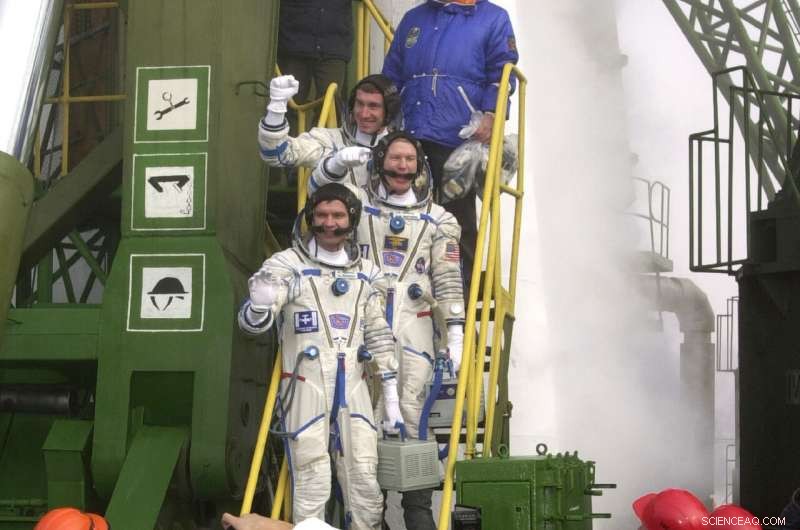
In this Oct. 31, 2000, photo provided by NASA, Expedition 1 crew members, from top, Sergei K. Krikalev, Bill Shepherd and Yuri P. Gidzenko pose for final photos prior to their launch aboard a Soyuz rocket to the International Space Station from the Baikonur Cosmodrome in Kazakhstan. Dois dias depois, they swung open the space station doors, clasping their hands in unity. Thus began 20 years of international cooperation and a steady stream of crew from around the world. (NASA via AP)
"I've got to say, that was my happiest day in space, " he said during the panel discussion.
With its first piece launched in 1998, the International Space Station already has logged 22 years in orbit. NASA and its partners contend it easily has several years of usefulness left 260 miles (400 kilometers) up.
The Mir station—home to Krikalev and Gidzenko in the late 1980s and 1990s—operated for 15 years before being guided to a fiery reentry over the Pacific in 2001. Russia's earlier stations and America's 1970s Skylab had much shorter life spans, as did China's much more recent orbital outposts.
Astronauts spend most of their six-month stints these days keeping the space station running and performing science experiments. A few have even spent close to a year up there on a single flight, serving as medical guinea pigs. Shepherd and his crew, por contraste, barely had time for a handful of experiments.
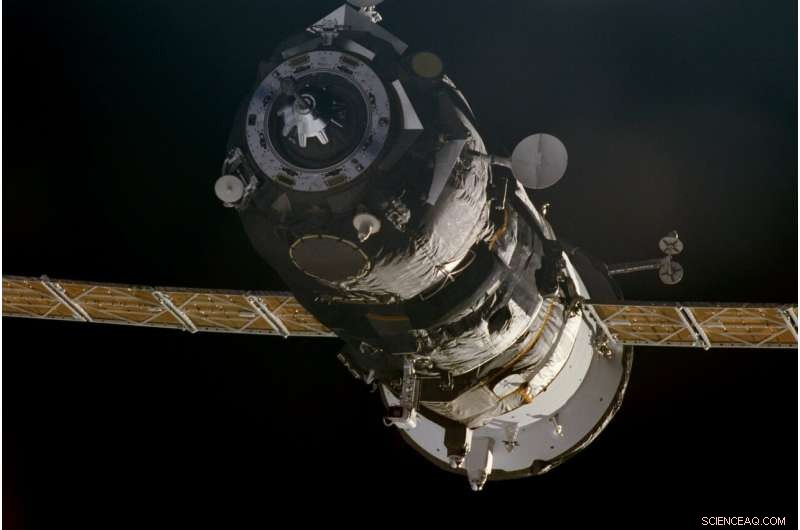
This photo provided by NASA shows a Progress supply ship that arrived on Nov. 18, 2000 to link up to the International Space Station, bringing Expedition 1 commander Bill Shepherd, pilot Yuri P. Gidzenko and flight engineer Sergei K. Krikalev two tons of food, confecções, hardware and holiday gifts from their families. (NASA via AP)
The first couple weeks were so hectic—"just working and working and working, " according to Gidzenko—that they didn't shave for days. It took awhile just to find the razors.
Even back then, the crew's favorite pastime was gazing down at Earth. It takes a mere 90 minutes for the station to circle the world, allowing astronauts to soak in a staggering 16 sunrises and 16 sunsets each day.
The current residents—one American and two Russians, just like the original crew—plan to celebrate Monday's milestone by sharing a special dinner, enjoying the views of Earth and remembering all the crews who came before them, especially the first.
But it won't be a day off:"Probably we'll be celebrating this day by hard work, " Sergei Kud-Sverchkov said Friday from orbit.
One of the best outcomes of 20 years of continuous space habitation, according to Shepherd, is astronaut diversity.
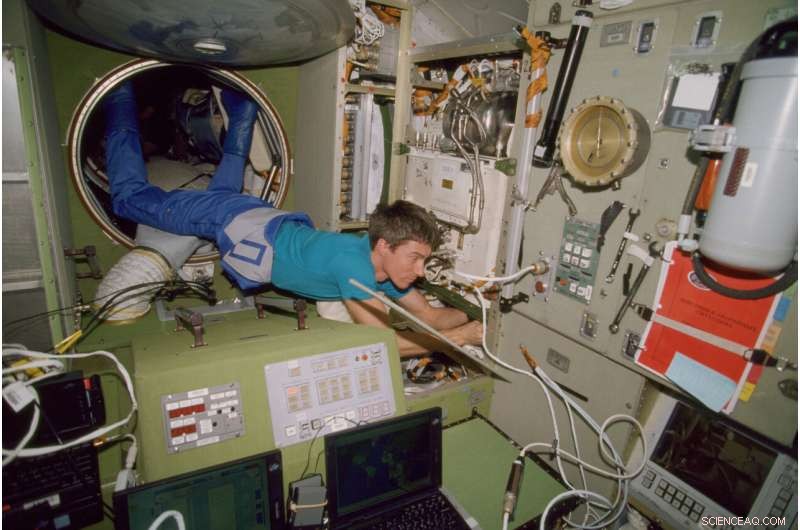
Nesta foto fornecida pela NASA, Expedition 1 flight engineer Sergei K. Krikalev works in the Zvezda Service Module, with his feet anchored in a tunnel hatchway, aboard the International Space Station on Dec. 6, 2000. The space station was cramped and humid with just three rooms when the first crew moved in. Conditions were primitive, compared with now, and the three spent most of their time coaxing equipment to work. In the past twenty years, the space station has morphed into a complex that's almost as long as a football field, with eight miles (13 kilometers) of electrical wiring and three high-tech labs. (NASA via AP)
While men still lead the pack, more crews include women. Two U.S. women have served as space station skipper. Commanders typically are American or Russian, but have also come from Belgium, Alemanha, Itália, Canada and Japan. While African-Americans have made short visits to the space station, the first Black resident is due to arrive in mid-November on SpaceX's second astronaut flight.
Massive undertakings like human Mars trips can benefit from the past two decades of international experience and cooperation, Shepherd said.
"If you look at the space station program today, it's a blueprint on how to do it. All those questions about how this should be organized and what it's going to look like, the big questions are already behind us, " he told the AP.
Rússia, por exemplo, kept station crews coming and going after NASA's Columbia disaster in 2003 and after the shuttles retired in 2011.
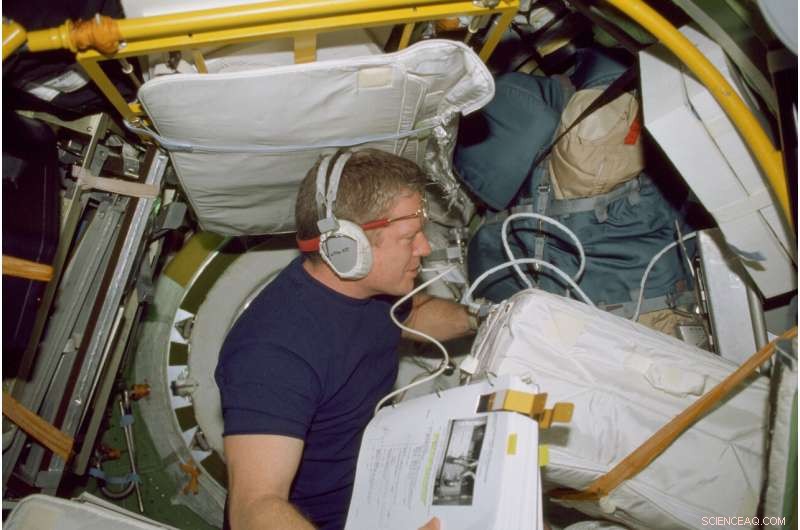
Nesta foto fornecida pela NASA, Expedition 1 mission commander Bill Shepherd works in a docking compartment aboard the International Space Station on Dec. 5, 2000. The International Space Station was a cramped, humid, puny three rooms when the first crew moved in. Twenty years and 241 residents later, the complex has a domed lookout, three toilets, six sleeping compartments and 10 rooms, depending on how you count. (NASA via AP)
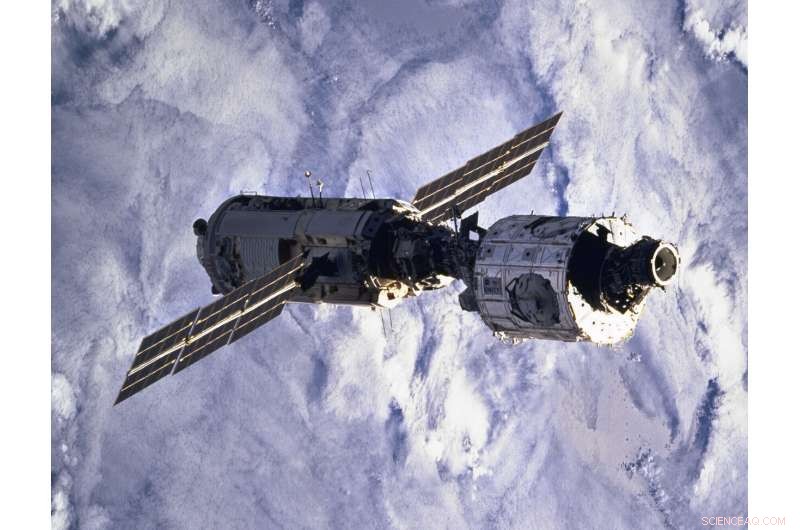
This photo provided by NASA shows the new International Space Station after the crew of the Space Shuttle Endeavour captured the Zarya Control Module, deixou, and mated it with the Unity Node, direito, inside the Shuttle's payload bay. This photo was taken after Endeavour undocked from the space station on Dec. 13, 1998, for the return to Earth. Almost two years later, the first crew—American Bill Shepherd and Russians Sergei Krikalev and Yuri Gidzenko—blasted off from Kazakhstan on Oct. 31, 2000, en route to the space station. Thus began 20 years of international cooperation and a steady stream of crew from around the world. (NASA via AP)
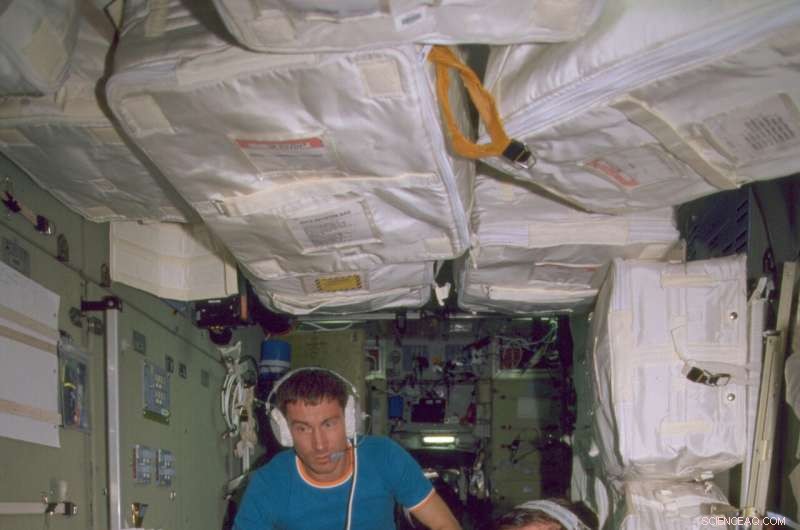
Nesta foto fornecida pela NASA, Expedition 1 crew members Sergei Krikalev, deixou, and Yuri Gidzenko work in the Zvezda Service Module onboard the International Space Station on Nov. 8, 2000. The first crew, Russians Krikalev and Gidzenko along with American Bill Shepherd, spent most of their time coaxing equipment to work in the cramped and humid three-room space station. Twenty years and 241 residents later, the complex is almost as long as a football field, with six sleeping compartments, three toilets, a domed lookout and three high-tech labs. (NASA via AP)
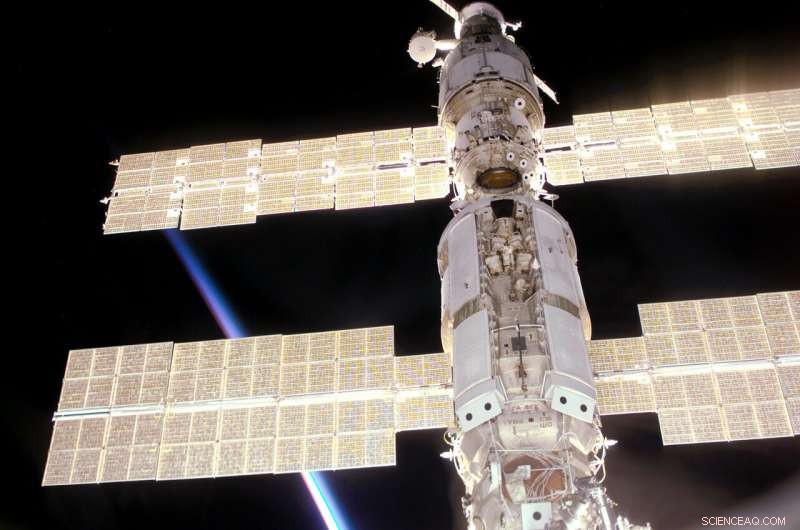
This photo provided by NASA shows the International Space Station as seen from Space Shuttle Atlantis during mission STS-106, which delivered supplies and performed maintenance in September 2000. The first crew of the space station—American Bill Shepherd and Russians Sergei Krikalev and Yuri Gidzenko—arrived less than two months later. Thus began 20 years of international cooperation and a steady stream of crew from around the world. (NASA via AP)
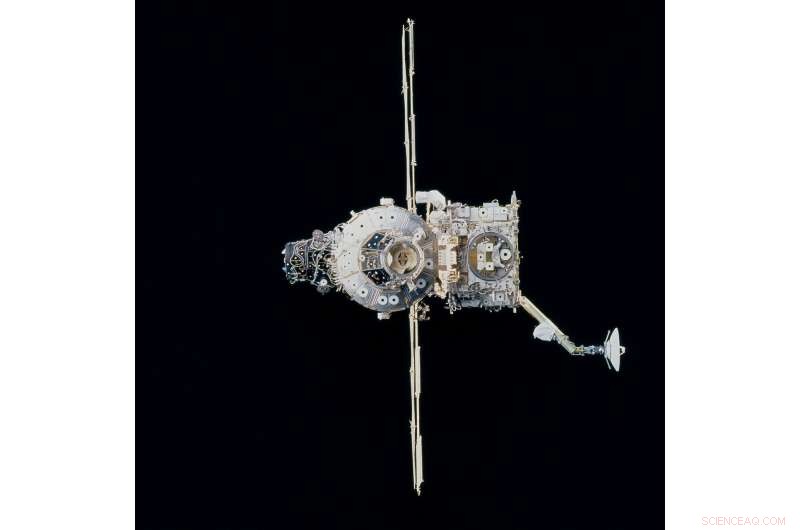
This Oct. 20, 2000 photo made available by NASA shows the International Space Station after separation of the Space Shuttle Discovery. Backdropped against the blackness of space, the Z1 Truss structure and its antenna, as well as the new pressurized mating adapter (PMA-3), are visible in the foreground. (NASA via AP)
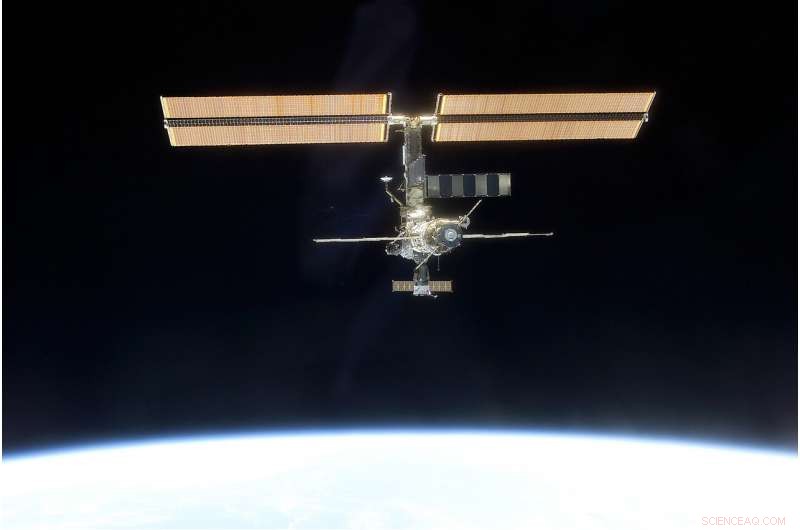
Nesta foto fornecida pela NASA, the International Space Station, backdropped against black space above Earth's horizon, is seen from the Space Shuttle Discovery on March 19, 2001, after a new crew comprised of cosmonaut Yury Usachev and astronauts James Voss and Susan Helms began several months aboard the station. In the early days of the station, it was a cramped and humid, with just three rooms. It's much larger now, with six sleeping compartments, three toilets, a domed lookout and three high-tech labs. (NASA via AP)
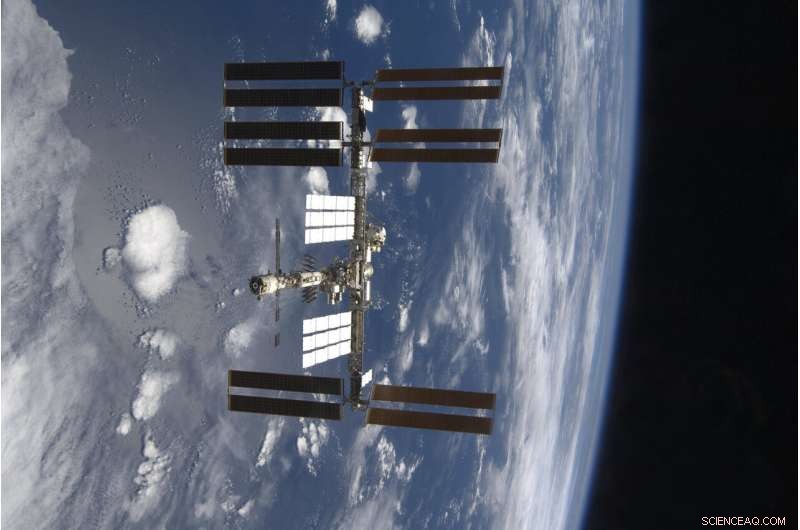
This photo provided by NASA shows the International Space Station as seen from Space Shuttle Endeavour as the two spacecraft begin their relative separation on Nov. 28, 2008. Twenty years after the first crew arrived at the space station, the spacecraft has hosted 241 residents and grown from three cramped and humid rooms to a complex almost as long as a football field, with six sleeping compartments, three toilets, a domed lookout and three high-tech labs. (NASA via AP)
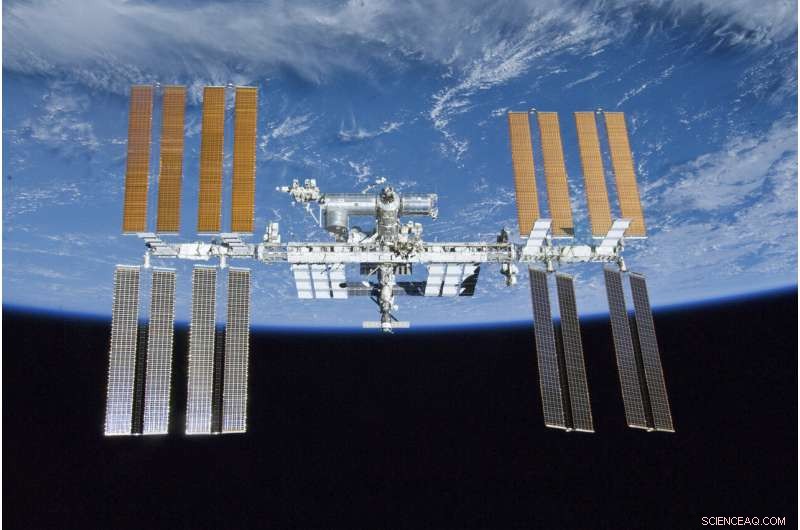
This photo provided by NASA shows the International Space Station as seen from the Space Shuttle Atlantis after the station and shuttle began their post-undocking relative separation on May 23, 2010. Twenty years after the first crew arrived, the space station has hosted 241 residents and grown from three cramped and humid rooms to a complex almost as long as a football field, with six sleeping compartments, three toilets, a domed lookout and three high-tech labs. (NASA via AP)
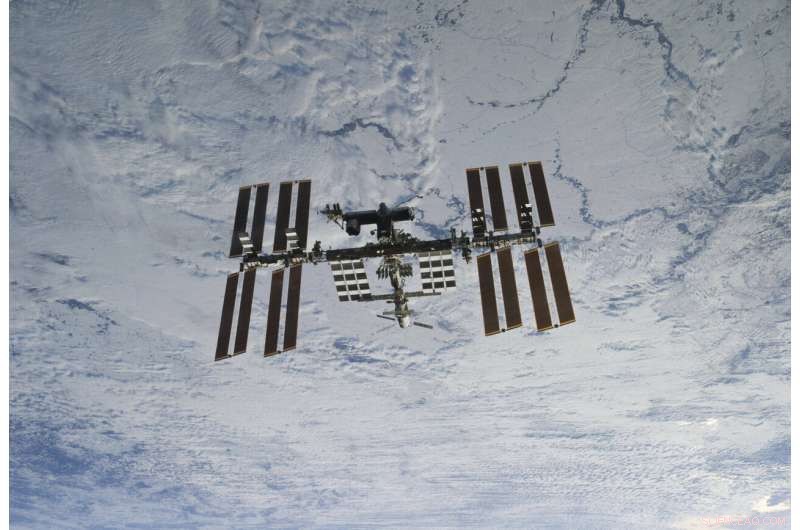
Nesta foto fornecida pela NASA, backdropped against clouds over Earth, the International Space Station is seen from Space Shuttle Discovery as the two orbital spacecraft accomplish their relative separation on March 7, 2011. From the first crew to the most recent, the No. 1 pastime aboard the station is gazing down at Earth. It takes just 90 minutes to circle the world, allowing crews to soak in a staggering 16 sunrises and 16 sunsets every day. (NASA via AP)
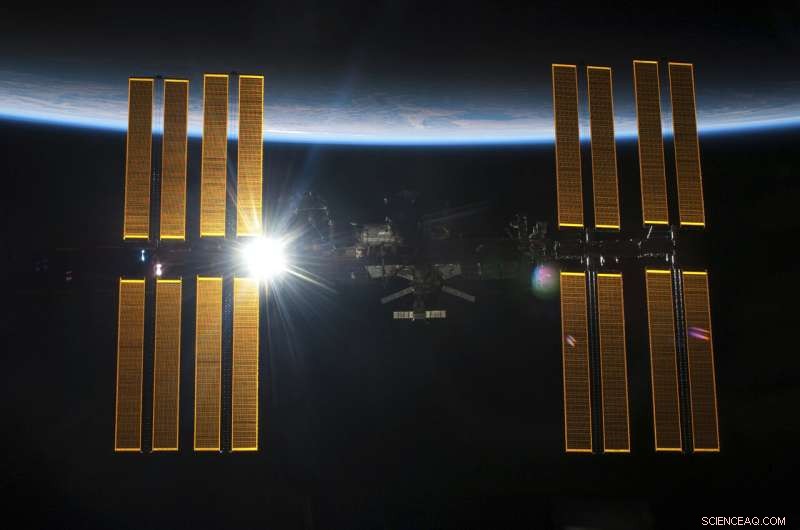
Nesta imagem fornecida pela NASA, the International Space Station is seen from the Space Shuttle Endeavour on May 29, 2011, after the station and shuttle began their post-undocking relative separation. It takes just 90 minutes for the space station to circle the world, allowing crews to see 16 sunrises and 16 sunsets every day. (NASA via AP)
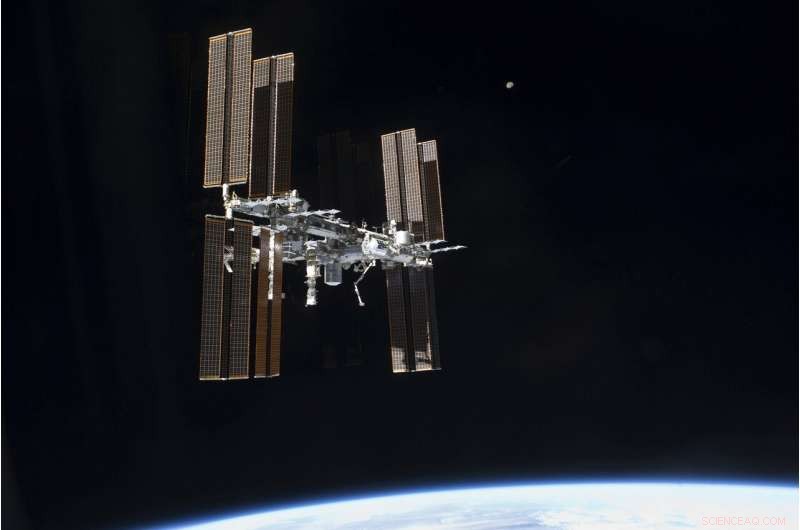
Nesta foto fornecida pela NASA, the International Space Station is seen from the Space Shuttle Atlantis as the two spacecraft perform their relative separation on July 19, 2011. Above and to the right of the space station is the moon far in the distance. (NASA via AP)
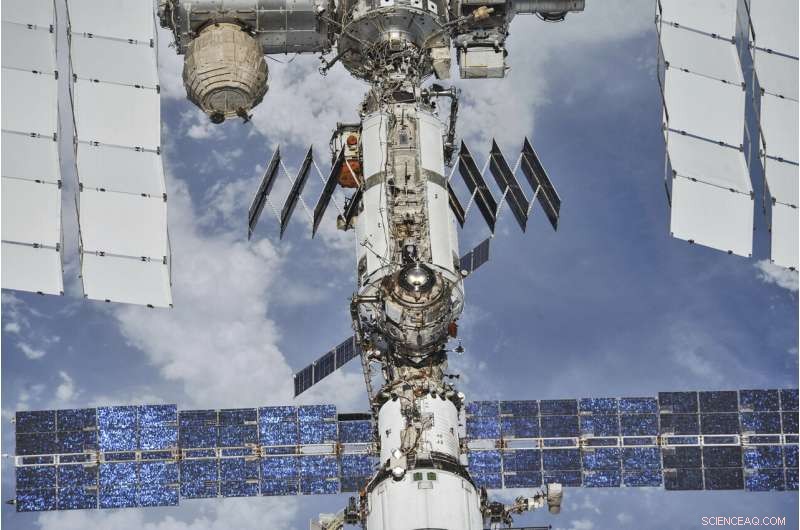
In this photo provided by NASA/Roscosmos, the International Space Station floats above the Earth as seen from a Soyuz spacecraft after undocking on Oct. 4, 2018. NASA astronauts Andrew Feustel and Ricky Arnold and Roscosmos cosmonaut Oleg Artemyev executed a fly around of the orbiting laboratory to take pictures of the station before returning home after spending 197 days in space. Twenty years after the first crew arrived, the space station has hosted 241 residents. (NASA/Roscosmos via AP)
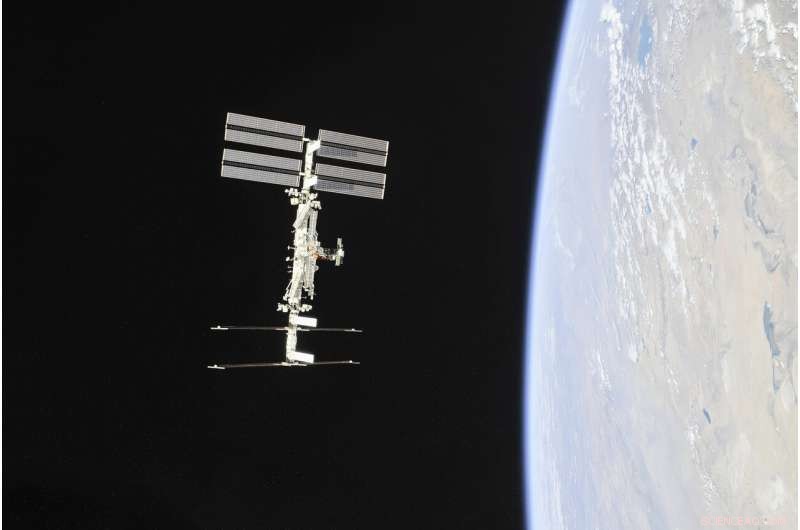
In this photo provided by NASA/Roscosmos, the International Space Station continues its orbit around the Earth as seen from a Soyuz spacecraft departing with NASA astronauts Andrew Feustel and Ricky Arnold and Roscosmos cosmonaut Oleg Artemyev, who had spent 197 days in space. From the first crew to the most recent, the No. 1 pastime aboard the station is gazing down at Earth. It takes just 90 minutes to circle the world, allowing crews to soak in a staggering 16 sunrises and 16 sunsets every day. (NASA/Roscosmos via AP)
When Shepherd and his crewmates returned to Earth aboard shuttle Discovery after nearly five months, his main objective had been accomplished.
"Our crew showed that we can work together, " ele disse.
© 2020 Associated Press. Todos os direitos reservados. Este material não pode ser publicado, transmissão, reescrito ou redistribuído sem permissão.